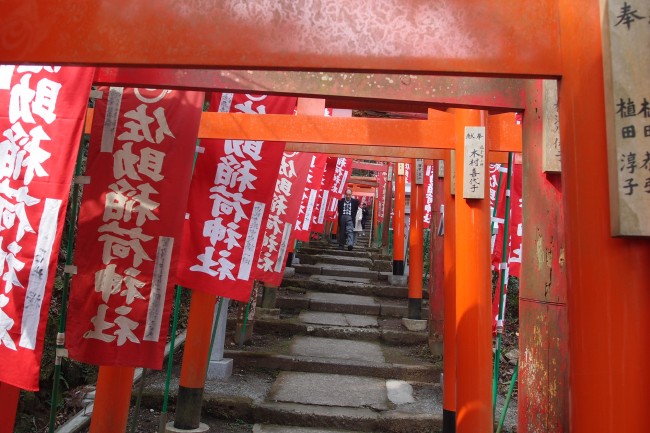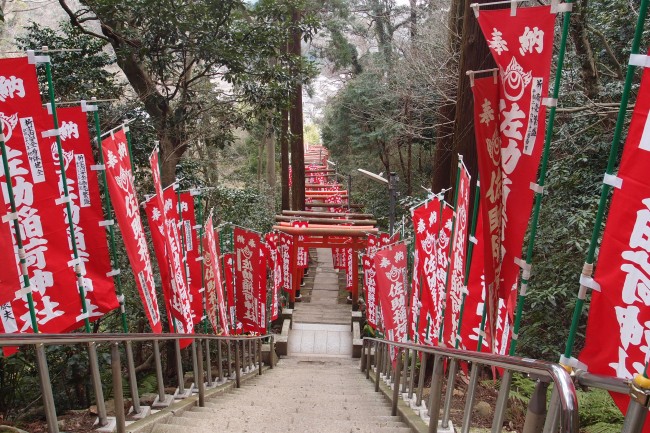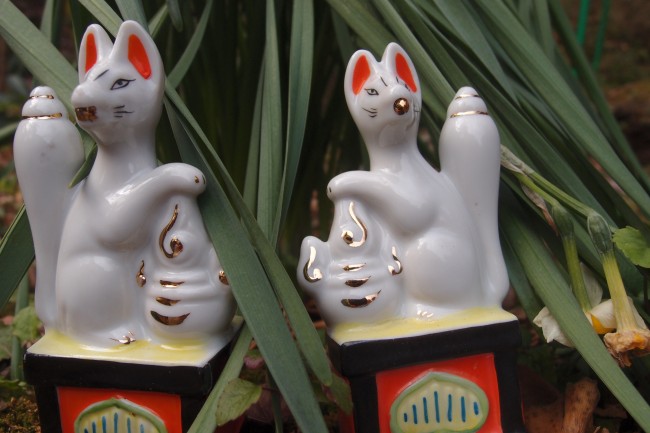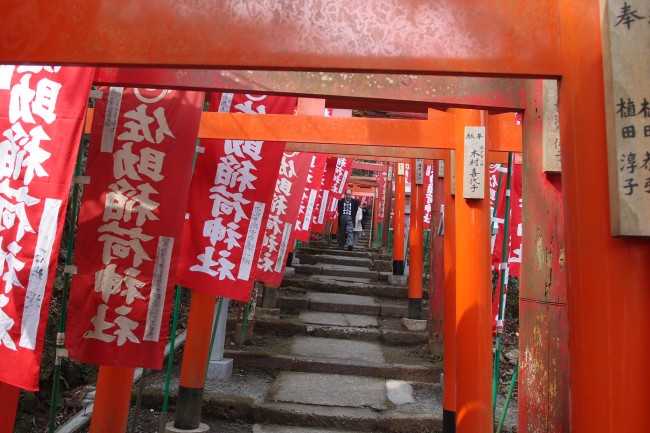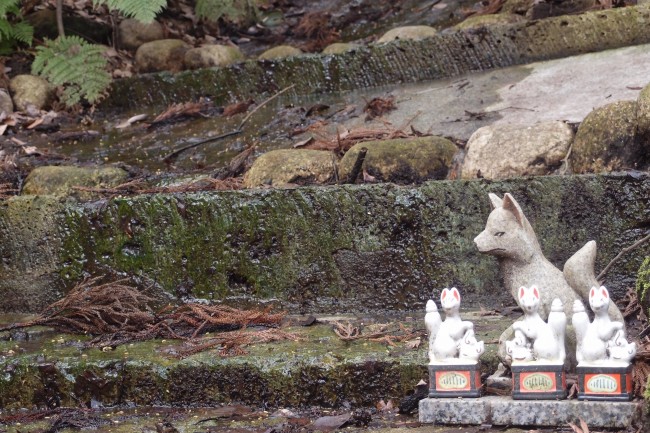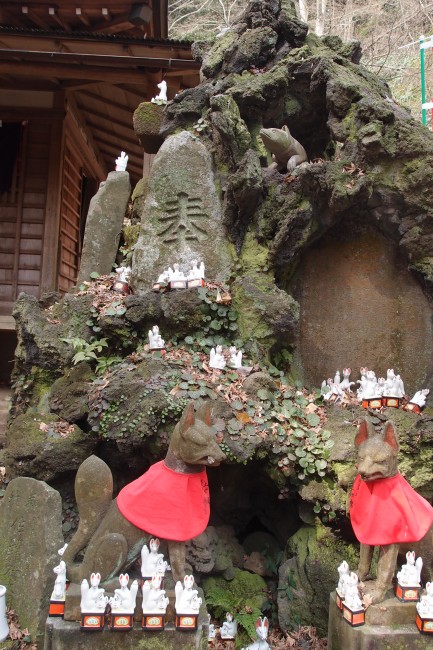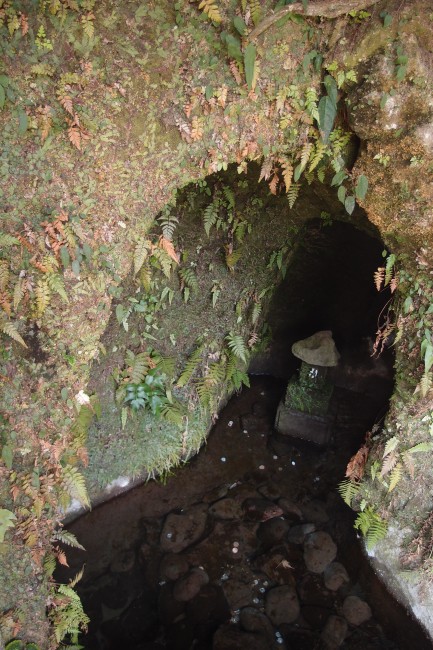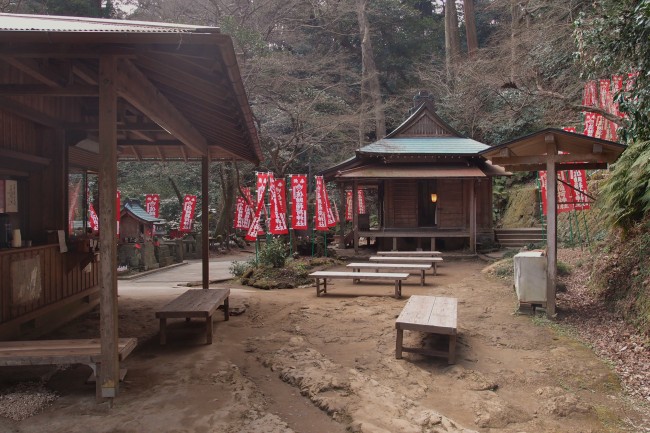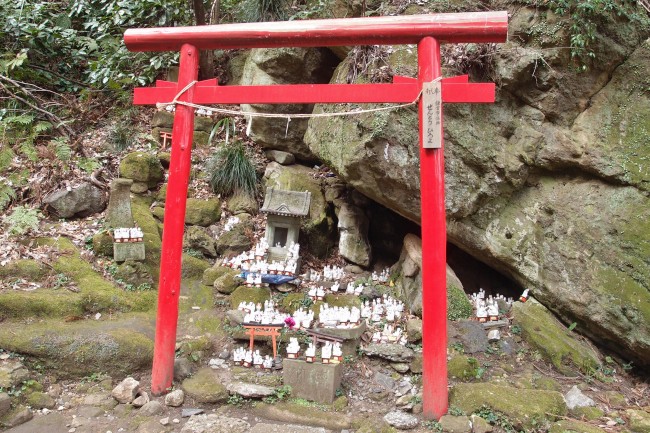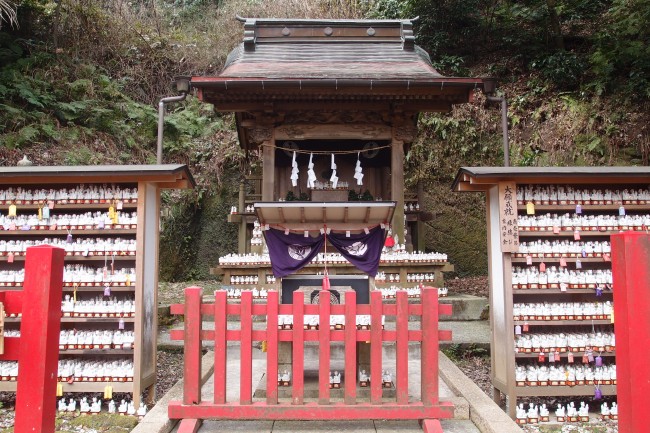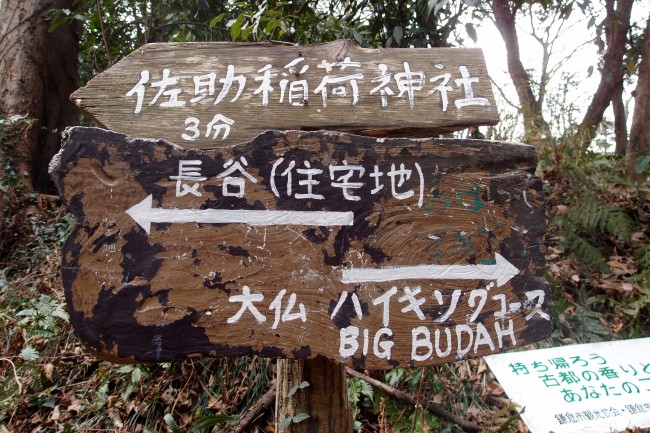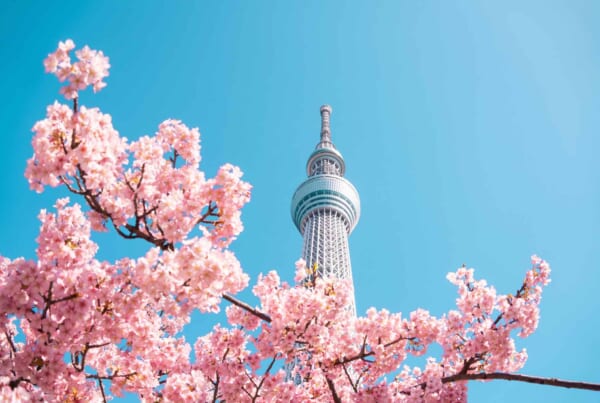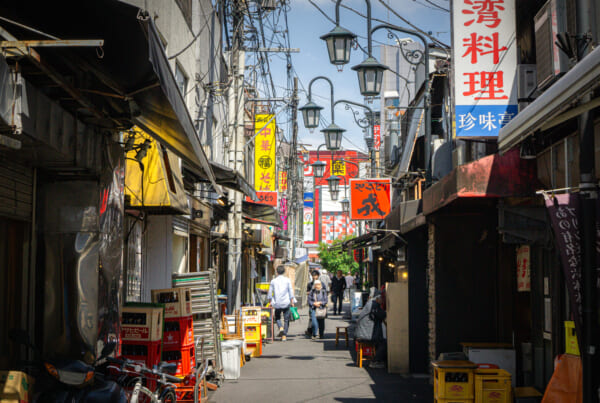Sasuke-Inari shrine began a succession of shoguns, but not before its inhuman inhabitants trotted through sleeping minds. A fox cackled, and its yowl became the consonance of well-formed vowels. As the fox smiled, hesitation – another portentous dream. Sleep’s black became a bruised backdrop, with hesitation to reconsider the vision a nightmare. The fox makes an entreaty to begin war against those who murdered family, promising victory. You might be bewitched, but you hear destiny in its words.
The Kamakura shogunate owes its legacy to this legendary dream, one that inspired future shogun Minamoto Yoritomo to its founding war. The dream’s denizen was a messenger of the god Inari, and to honor this dream fox, Minamoto sought to memorialize its earthly den. Its quiet monument erected on Kamakura’s relaxed slopes inspires dreams to this day: Sasuke Inari shrine.
While hiking up from the quiet Kamakura backroads, orange torii stretch out as the phosphorescent after-image of Minamoto’s dream fox. Though bright, Sasuke Inari shrine displays its colors in variegations of time. Like a foxy nine-tailed beast’s tails, some gates have faded with time.
As you secure your enshrining, the gates become less densely-spaced. These are windows into negative space where little ghosts spot the ground. Pale porcelain foxes sniff out towards a vast world of bitty beasties. Stone foxes and other statuary beasts stiffly guard the torii posts. One eerie artifact was half-faced, its snout snuffed out with the passing time.
The Honten shrine watched in the background, engraved into the hillside tree groves like a timeless talisman. The immediate haiten held an orange lantern, as if Inari had been recollecting centuries of human historical figures by candlelight at an hour when the whole earth slept. The shrine was vacant on the weekend March morning, and even the warden’s mind was missing Sasuke-Inari’s details when we asked about a monument at the gate.
A mound of lake-bottom-looking sod stood deposited onto the ground by the Haiten building. The image’s earthiness fits the sanctification of Shinto well, a spotted vision of transplanted lake-bottom greens. It is Inari’s, obvious for the foxes perched on every rock’s cranny.
A little altar peaks out from the shrine’s far side. It enshrines the deep earth animism of Shinto; the little holy space is one of Kamakura’s springs. To the side are shelves of small foxes. They seem lined to dry after a watery passage into the spirit world.
Flitting into view was the Haiten light. It seemed to flicker momentarily, infinitesimally perceived as a lick from one of Inari’s porcelain companions. Between the far side of Sasuke-Inari and the Haiten are well-arranged benches which were absent of life save for an unseasonable bug. Perhaps the foxes gather here at night for snacking a snarled bit of bug; a human might enjoy some green tea from the welcome building while seated here.
The Honten is reached by terraced stairs behind the Haiten building. All the excess shrine space encompassed the openness off to the Haiten’s right, while the main buildings are clustered like foxes in wary silence. They were vixens verging on the outside.
Climbing the stairs, each narrow step required a careful lift. I imagine this is habitual for the old shrine keepers, going back hundreds of years. The tang of age is on the place. One legend behind Sasuke-Inari says that it was a village, and one of its old denizens had visited the dreams of future shogun Minamoto Yoritomo.
The Honten is graced by symmetrical structures towards its front, and dressed by bushes rather than the bulkier eaves of the Haiten. Its fences spindly wood is more like the legs of foxes. Trailing left runs the path to the Daibutsu hiking course. Trotting off, we left the old warden of the shrine to his foxes.
Access: From Kamakura station, walk 15 minutes west. From Kita-Kamakura station’s west exit, walk five minutes south. On your right is the entrance to the Daibutsu hiking course. Continue walking for an hour or so. When you see the sign bellow, turn left. The top post indicates “Sasuke-Inari Shrine, three minutes.”
[cft format=0]

